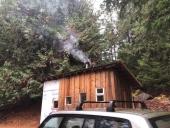
 5
5




 4
4




Invasive plants are Earth's way of insisting we notice her medicines. Stephen Herrod Buhner
Everyone learns what works by learning what doesn't work. Stephen Herrod Buhner
 2
2




Nails are sold by the pound, that makes sense.
Soluna Garden Farm -- Flower CSA -- plants, and cut flowers at our farm.
 5
5




Silence is Golden
For all your RMH needs:
dragontechrmh.com

 5
5




For all your Montana Masonry Heater parts (also known as) Rocket Mass heater parts.
Visit me at
dragontechrmh.com Once you go brick you will never go back!

 3
3





How Permies works: https://permies.com/wiki/34193/permies-works-links-threads
My projects on Skye: The tree field, Growing and landracing, perennial polycultures, "Don't dream it - be it! "
 3
3




Thank you Thomas for your very complete and informative answer to my question about whether a RMH could be used to heat the floor of my planned small dome.thomas rubino wrote:Hi Freida;
So If I understand correctly, you are thinking of placing large rocks down as the base of your dome.
Then you are thinking of a clay/sand cob over your rock as your walking floor.
You are hoping to bury pipes in the clay layer to heat your floor.
You did not say what style/size RMH you were thinking of, but an 8" J tube is my guess.
If that is so, your going to need a pretty thick cob layer to protect the pipes from the pressure of walking on them as well as a mass to hold that heat.
You want a fairly thick cob layer below your pipes and quite a bit more over the top. Failure to do that will result in poor performance and too hot or too chilly feet.
I'm thinking 16" cob floor minimum with 3-4" insulated cob (straw) then your 8" pipes and 5-6" over top minimum... that is a lot of cob to put in a 20' circle.
I assume this will be your home and not a meeting area, so you will be living in your dome.
I highly recommend you consider a heated bed/bench rather than the floor, for the most warmth while the fire is out.
I realize space is at a premium in a 20' dome but you will need a place to sleep and a place to sit down, both are extra nice if they are heated.
Cooking can be done on a J tube but your cooking space is limited a batch box is much more suited to cook on the flat top.
Another option would be a full brick bell. They can be any shape or size (within reason) and the large mass of brick will radiate for hours.
They use much less space and provide lasting warmth and can be built with a cooking surface.
Please keep us posted on your progress with posts including many photos!




 4
4




For all your Montana Masonry Heater parts (also known as) Rocket Mass heater parts.
Visit me at
dragontechrmh.com Once you go brick you will never go back!
 1
1




Nancy Reading wrote:I'm also interested in a heated floor from a rocket mass heater. I'm wondering about a sort of bell under the floor, with paving slabs, but have not seen anything similar as yet, so will watch to see what else gets suggested here.
In terms of dome structures have you seen the RMH in a Teepee thread here? That shows how the mass of the heater can be used as a peripheral sleeping bench.
 2
2




Freyda Black wrote:I'm giving up on the heated floor idea for now since reading Thomas Rubino's information about how much cob structure it would take to make it. I'm following the brick bell idea right now as I investigate further. It looks like something I could handle and is more familiar in building style to me.
regards, Peter




Peter van den Berg wrote:
There's an explanation how bells work, how to calculate the right size and some examples on https://batchrocket.eu/en/building#belltheory
This information is geared towards batch box rockets, though. In order to get a good ballpark, keep in mind a batchrocket will yield twice as much heat in any given time as compared to the J-tube. In other words, a brick bell tailored to a J-tube ought to be half the Internal Surface Area of a batchrocket of the same system size.
 1
1




Freyda Black wrote:However, there is no mention of secondary burning of gases, which is not surprising since the system is designed to extract heat efficiently, cooling the gases. This raises two questions.
1. If there is no secondary burn, does this not lead to greater exhausting of unburned gases and more air pollution?
Freyda Black wrote:2. Likewise (if #1 is true) is there not also a higher deposition of creosote in the bell, requiring cleaning as in a standard wood stove and chimney?
Freyda Black wrote:If these are not true, what is it I am missing in the principle of the bell?
Freyda Black wrote:Also, I don't understand what you mean by "a brick bell tailored to a j-tube". Perhaps the article you referenced is a bit of putting the cart before the horse for me. Maybe I need to learn more about what batch rockets and J-tubes are? You probably missed my earlier post explaining my limited knowledge.
regards, Peter
 1
1




Silence is Golden
For all your RMH needs:
dragontechrmh.com

|
Gimmie! Gimmie dammit! Gimmie that tiny ad!
The new permaculture playing cards kickstarter is now live!
https://www.kickstarter.com/projects/paulwheaton/garden-cards
|







